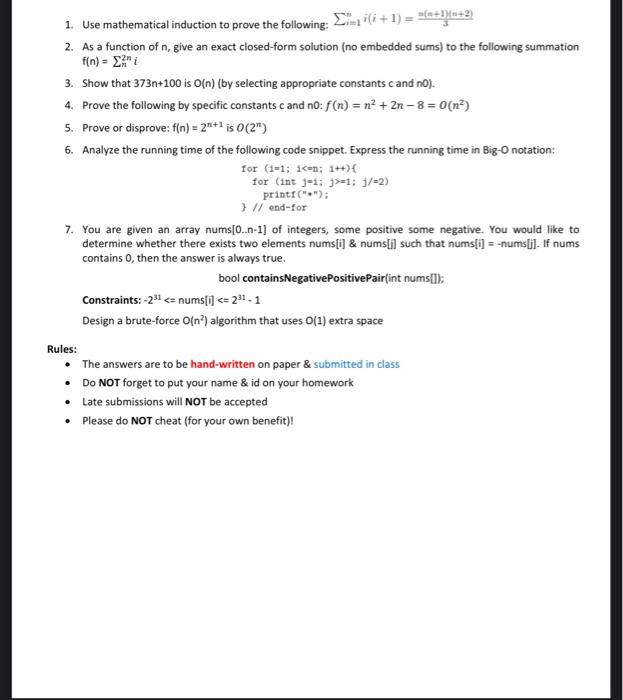Answered step by step
Verified Expert Solution
Question
1 Approved Answer
1. Use mathematical induction to prove the following: 1(i+1)==(n+1)(n+2) 2. As a function of n, give an exact closed-form solution (no embedded sums) to

1. Use mathematical induction to prove the following: 1(i+1)==(n+1)(n+2) 2. As a function of n, give an exact closed-form solution (no embedded sums) to the following summation f(n) = ?" t 3. Show that 373n+100 is O(n) (by selecting appropriate constants c and no). 4. Prove the following by specific constants c and no: f(n) = n + 2n-8=0(n) 5. Prove or disprove: f(n) = 2+1 is 0(2) 6. Analyze the running time of the following code snippet. Express the running time in Big-O notation: for (1-1; i =1; j/-2) printf(""); } // end-for 7. You are given an array nums[0..n-1] of integers, some positive some negative. You would like to determine whether there exists two elements nums[i] & nums[i] such that nums[i] =-nums[j]. If nums contains 0, then the answer is always true. bool containsNegativePositivePair(int nums[]); Constraints:-2
Step by Step Solution
★★★★★
3.48 Rating (141 Votes )
There are 3 Steps involved in it
Step: 1

Get Instant Access to Expert-Tailored Solutions
See step-by-step solutions with expert insights and AI powered tools for academic success
Step: 2

Step: 3

Ace Your Homework with AI
Get the answers you need in no time with our AI-driven, step-by-step assistance
Get Started


